Rossella Castagna, postdoctoral researcher at IBEC wins the ISOP2019 prize
 Rossella Castagna a postdoctoral researcher in the Nanoprobes and Nanowitches group at IBEC was awared with the ISOP2019 prize last week 9th International Symposium on Photochromism held in Paris. This recognition comes from her contribution to the field of photochromism and for the results that were collectively obtained in their group in the field of photopharmacology.
Rossella Castagna a postdoctoral researcher in the Nanoprobes and Nanowitches group at IBEC was awared with the ISOP2019 prize last week 9th International Symposium on Photochromism held in Paris. This recognition comes from her contribution to the field of photochromism and for the results that were collectively obtained in their group in the field of photopharmacology.
Rossella presented the group results on photoswitchable drugs at the reference international meeting for photochromism, held every 3 years, where she was awarded with the conference prize. According to the organizing committee, such a prize rewards the most talented young researchers whose contribution is expected to notably impact the field of photochromism.

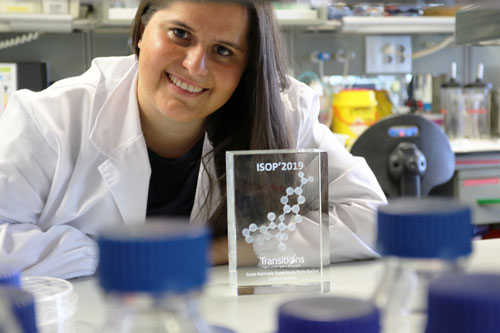
 Rossella Castagna a postdoctoral researcher in the Nanoprobes and Nanowitches group at IBEC was awared with the ISOP2019 prize last week 9th International Symposium on Photochromism held in Paris. This recognition comes from her contribution to the field of photochromism and for the results that were collectively obtained in their group in the field of photopharmacology.
Rossella Castagna a postdoctoral researcher in the Nanoprobes and Nanowitches group at IBEC was awared with the ISOP2019 prize last week 9th International Symposium on Photochromism held in Paris. This recognition comes from her contribution to the field of photochromism and for the results that were collectively obtained in their group in the field of photopharmacology.

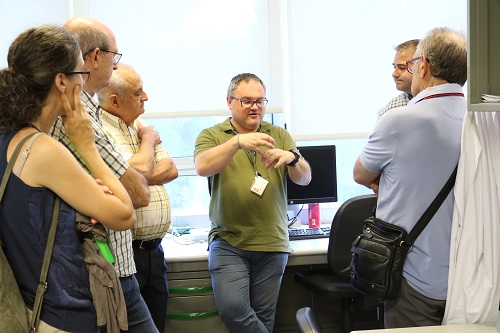 Representatives of the board of directors of the Catalan Association of Cystic Fibrosis (ACFQ) recently visited IBEC laboratories to discuss the latest advances in bacterial resistance with Dr. Eduard Torrents, principal investigator at IBEC of the group of Bacterial infections: Antimicrobial therapies .
Representatives of the board of directors of the Catalan Association of Cystic Fibrosis (ACFQ) recently visited IBEC laboratories to discuss the latest advances in bacterial resistance with Dr. Eduard Torrents, principal investigator at IBEC of the group of Bacterial infections: Antimicrobial therapies .

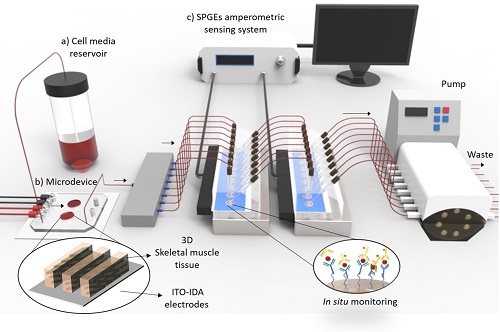
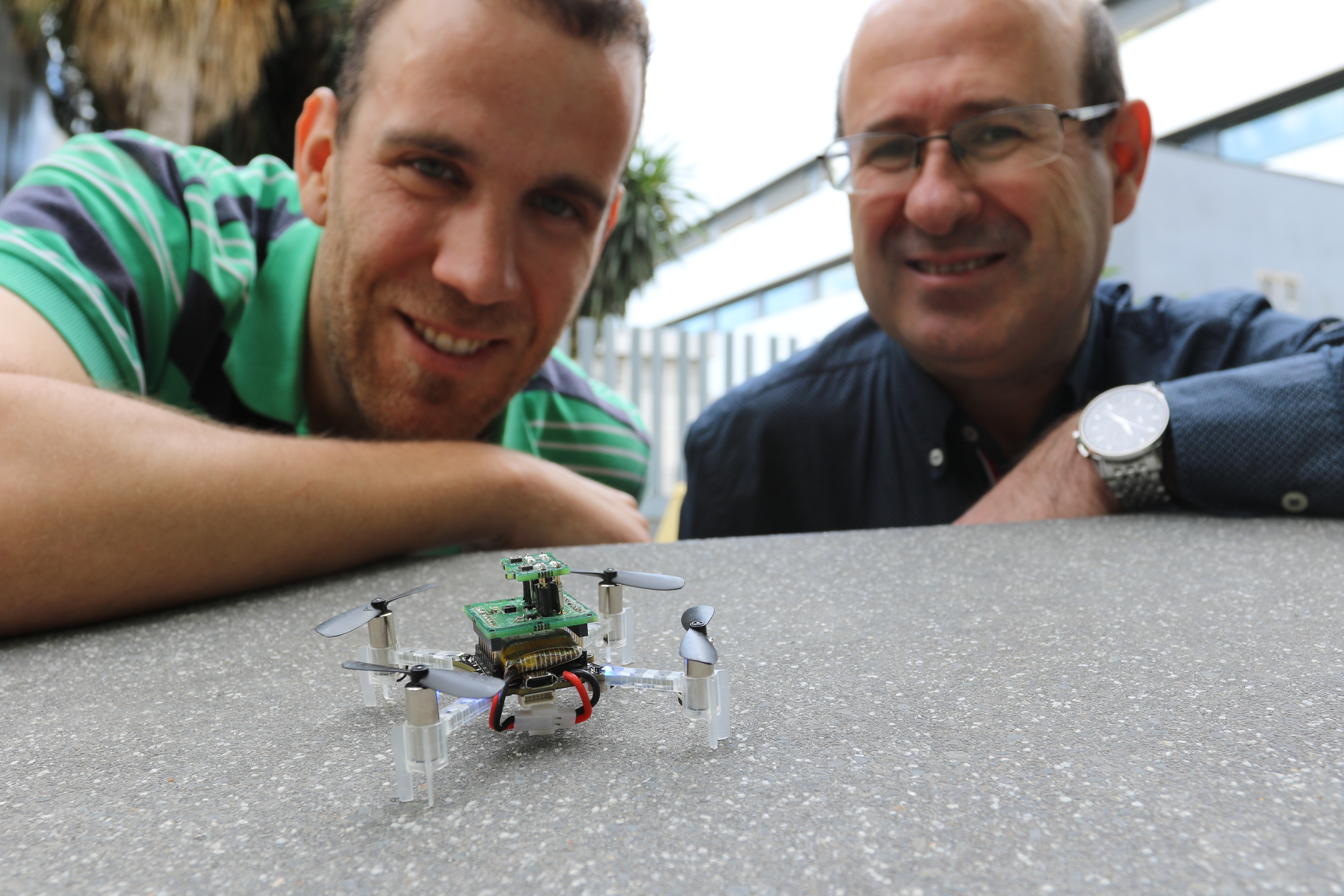
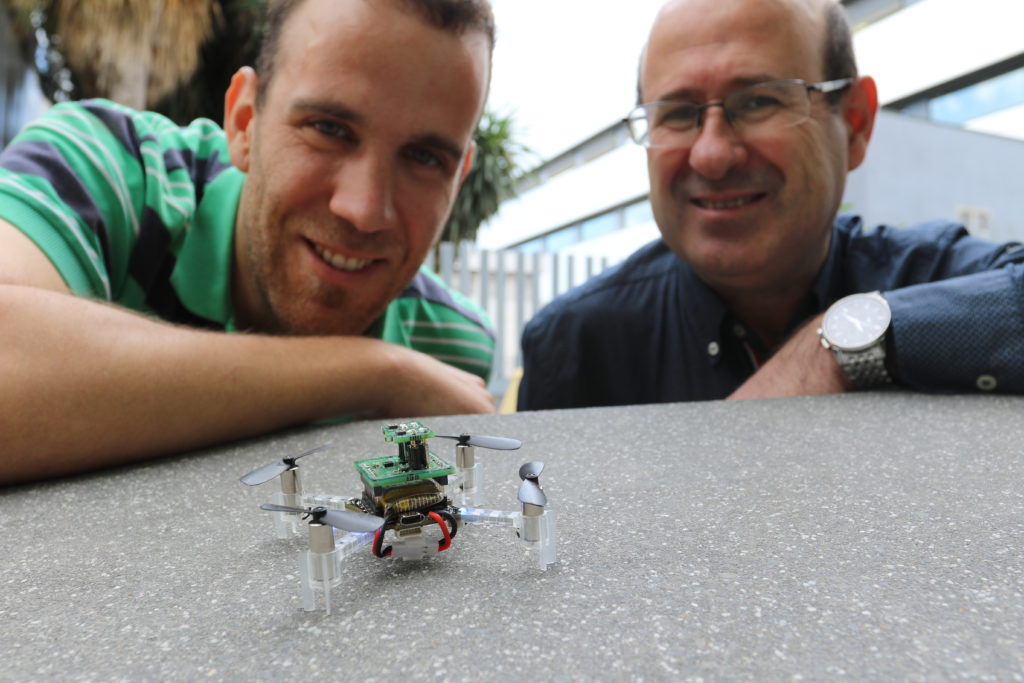 Researchers of the Signal and information processing for sensing systems research group at IBEC, led by Santiago Marco, have designed a nanodrone that could identify toxic gases in buildings that collapsed due the effects of earthquakes or explosions. The new gadget, which weights thirty-five grams, could be useful to detect the presence of victims in closed spaces which are hard to enter.
Researchers of the Signal and information processing for sensing systems research group at IBEC, led by Santiago Marco, have designed a nanodrone that could identify toxic gases in buildings that collapsed due the effects of earthquakes or explosions. The new gadget, which weights thirty-five grams, could be useful to detect the presence of victims in closed spaces which are hard to enter.